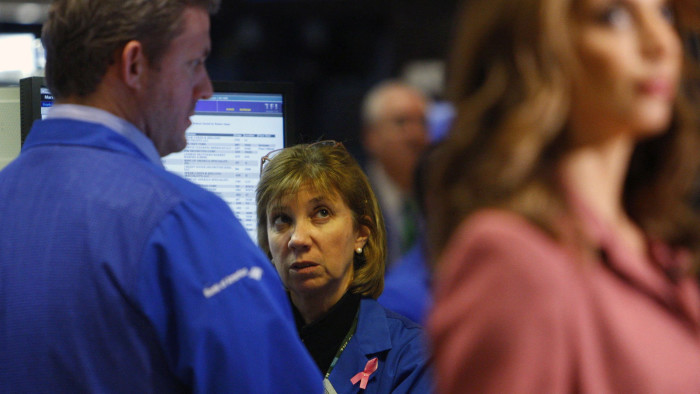How this market crash is different from 2008, and the same


Simply sign up to the Global Economy myFT Digest -- delivered directly to your inbox.
The writer is Allianz’s chief economic adviser and president-elect of Queens’ College, University of Cambridge
Unlike the global financial crisis, this is not a crippling crunch in the banking or payments and settlements systems.
Instead, the world economy and markets are going through a rough patch that has been years in the making. The tough times are also being amplified because governments have fewer ways to respond to them.
The immediate cause of the turbulence is the erosion of three anchors that had kept markets steady, or even rising, despite deteriorating fundamentals.
First, the actual and feared impact of the coronavirus is destroying supply and demand simultaneously. This has undermined the momentum of global economic growth.
Second, central banks are no longer seen as able to repress financial volatility through injections of liquidity and ever-lower interest rates. Policy interest rates are already negative in Europe.
Third, Saudi Arabia’s decision to launch an oil price war, which has sent the price of crude down more than 20 per cent, has imperilled the viability of small oil companies and undermined parts of the corporate bond market.
As a result, elevated asset prices have begun to fall back to where fundamentals suggest they should trade (even as fundamentals are also deteriorating). Because this correction is happening in a disorderly manner, there is a risk of collateral damage to the financial world and the real economy.
Today’s turbulent markets recall how they behaved in the financial crisis 12 years ago. So does the growing likelihood of recession among a lengthening list of countries that already includes Germany, Italy and Japan. Even so, today’s situation, as unsettling as it is, differs in an important way.
Because it did not originate among banks, it does not endanger the nerve centre of all modern market-based economies, namely their payments and settlements systems.
Unfortunately, today is also different from 2008 in less reassuring ways.
Governments are starting their race to address today’s turmoil from a lagging position. For too long, they pursued an unbalanced economic policy mix that relied on monetary policy to support growth. Too much policy ammunition has also been fired inefficiently — such as last week’s 50 basis point rate cut by the US Federal Reserve, which was ill-received by markets.
To stop what could become a vicious cycle, where a worsening real economy drags down markets and markets then drag down the economy, governments must now do several things.
They must use laser-targeted measures to create a sustainable economic floor. These could include medical measures that help contain the virus, such as free coronavirus testing; policies to protect society’s most vulnerable, such as free treatment to Americans without health insurance; and ways to ease specific financial market malfunctions, such as illiquidity.
These measures must also use a co-ordinated “whole of government” approach. There has been too much reliance on central bank action to boost growth; governments must now pursue true productivity-enhancing reforms.
Lastly, there must be supplementary international co-ordination to establish what collective actions can be deployed.
The faster this is done, the stronger the economic turnround will be. That eventual recovery will be turbocharged by extremely low mortgage rates and energy prices, both of which boost consumer purchasing power. The quicker that markets see this coming, the faster they will snap back. And this time, unlike in 2008, that snap back and economic recovery will rest on more genuine and lasting underpinnings.

Comments